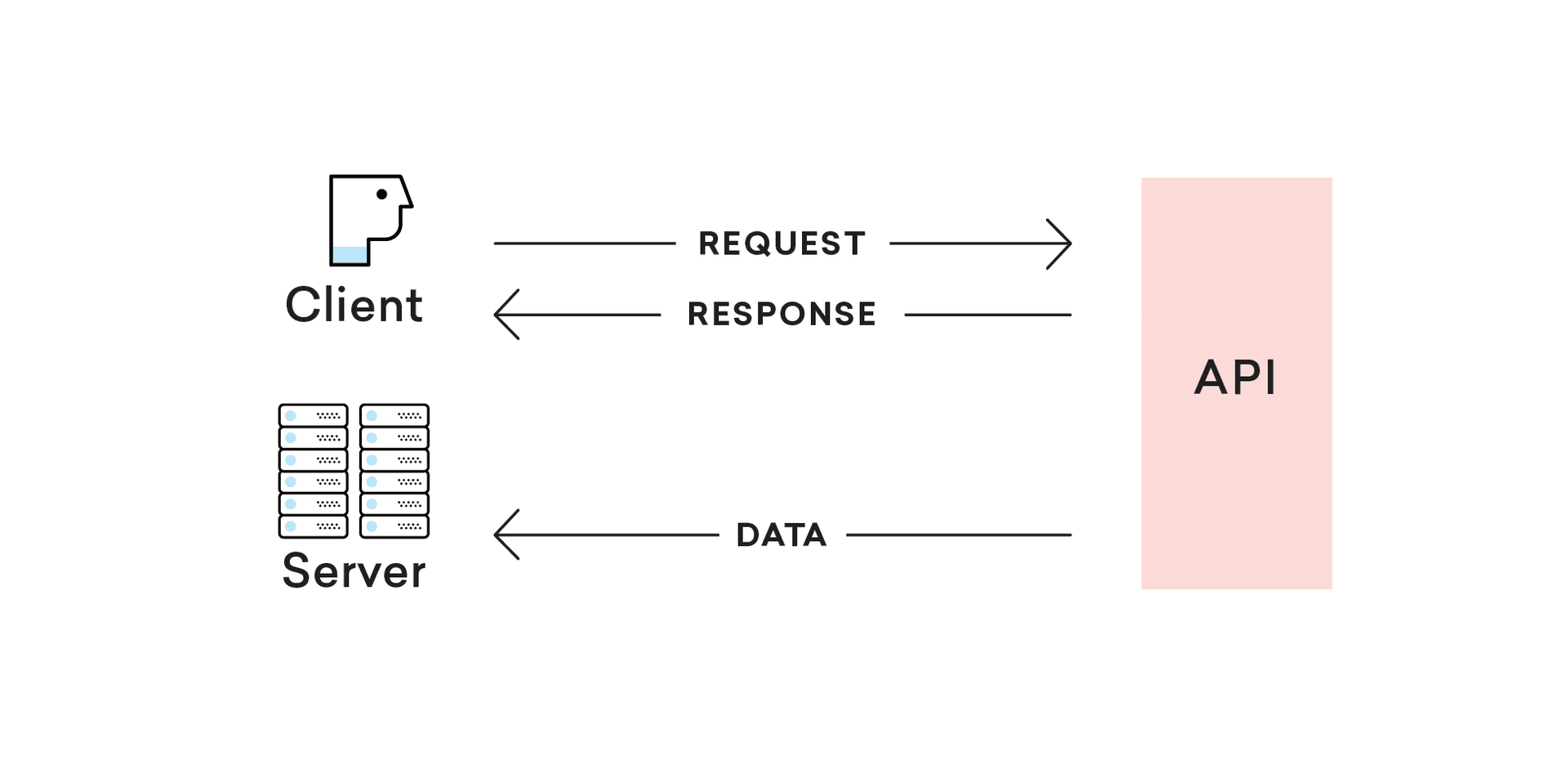What's An API?
Published on April 11, 2018/Last edited on April 11, 2018/8 min read


Namkyu Oh
Solutions Consultant at BrazeIt’s not exactly a secret that a business without a mobile strategy these days is a business in trouble. But while most people know that leveraging data to engage your audience through digital channels and platforms is key if you want to build strong, sustainable customer relationships, a lot of people are a bit fuzzier about the particulars of how technology allows them to do that.
To engage your audience these days, it’s crucial that you have tools that can support the processing and handling of customer data in smart, scalable ways. That’s made it essential for businesses to take advantage of foundational technology tools like SDKs and APIs.
Not sure what an API really is? Heard the term around the office and just nodded your head nervously? Looked it up on Urban Dictionary, then wondered silently why you thought Urban Dictionary would have a solid definition? Well, don’t worry—we’ve got you.
Okay, So What Is An API?
API stands for Application Programming Interface! Obvious, right?
Uh, Not Exactly? 😅
It’s okay. While that’s what “API” literally means, it’s not going to do a lot to clarify things for most people, or give any insight into the value that APIs can provide to your business.
Instead, let’s focus on the key thing about APIs: namely, that they’re a service that handles and responds to requests. They tend to be composed of tools and protocols that are optimized to handle these requests and offer appropriate, timely responses. That means that they’re capable of allowing different software programs to interact with one another effectively.
A lot of times, people describe APIs as two different systems or applications communicating—that is, one system makes a request and the API makes the appropriate response. Think of it this way: when I talk to you, I’m sending you information, but you’re also sending responses back—and, depending on the type of information I convey to you, your responses may differ and potentially lead to action. (For instance, if I ask to borrow your pen, that request might lead you to reach into your pocket, snag a pen, and hand it to me.)
APIs work kind of the same way, making it possible to manipulate data in scalable fashion. Not only can APIs send back data in response to a query, they can also send information elsewhere and even “speak”—that is, initiate new processes and actions in other systems.

All Right, I’m Following So Far… Just Kidding, I’m Really Not.
Totally fair!
Okay, imagine that you’re doing your morning ritual and grabbing a cup of coffee before work. You go up to the barista and make some sort of request: ”Large americano,” say. With the data you’ve provided in that request, the barista will then make a determination about whether they can make that drink and, if so, they’ll follow a series of steps that will allow them to eventually respond to your communication with a hot cup of coffee. If that barista can’t handle your request—maybe they’re out of beans, or their point-of-sale system is down—they’ll let you know, and from there, you can request something else.
The service that the barista is performing—from gathering your order (or request), processing it (prepping the espresso and hot water), and returning some response or output (your ☕ or “can I get you something else?”) is exactly what an API does.
But Are APIs As Common As Coffee?
Much like your morning ritual, you’re probably interacting with APIs every single day in connection with your phone or laptop. Take me, for example. After I grab that coffee, I’ll probably check an app to see the train schedules. That app is requesting to some sort of API to fetch the arrival times for upcoming trains in real time so that I can access and view that data to know how quickly I need to run to make the next L train. From there, I squeeze my way in and open up Spotify to listen to some music, and as it plays, I read along with the song lyrics handled by a third party inside the app itself. I sit down at my desk at work and then open up my Gmail to look through (ideally personalized) messages from Braze customers leveraging our own APIs to enrich their customer profile data and send messages effectively.
When Does It Make Sense To Use APIs?
In general, when you have a system that needs to communicate with other systems, APIs can be an effective way to make that happen. They aren’t the only way—there’s a reason that SDKs, real-time data exports, and other tools are out there—but APIs do make it possible to store, handle, and service information to you, at scale. APIs can process immense numbers of requests with speed, security, and proper functionality, which is key as the amount of customer data and the number of systems that depend on that data continues to grow.
One common place where APIs add a lot of value? Customer messaging. When brands are looking to reach their customers with timely, relevant outreach, one of the most powerful ways to do that is dynamic content—that is, automatically inserting information from an internal or public API to personalize the messages they send to their audience. (Think adding individually customized information about the weather where each recipient is, or personalized recommendations based on their previous purchases.)
That’s a killer use case, one that’s only possible because of APIs. But it’s not the only one. It’s also possible to use APIs to support better, cohesive customer messaging across multiple systems, internal and external. You can leverage APIs to trigger email, push notifications, and other messages sent through your customer engagement platforms, making it possible to send messages in response to customers’ in-store purchases and other behavior that’s being tracked in your proprietary systems. You can also send messages through your in-house systems, but with the segmentation and customization capabilities a customer engagement platform provides—just make an API call to the appropriate API endpoint and you’re good to go.
Wait, What Are API Calls And API Endpoints?
An API call is a communication with a given API that you initiate to achieve a particular purpose—whether that’s to call up weather information, trigger a message, or carry out some other task. (Remember when we talked about APIs responding to a request? Those requests are called API calls.) An API endpoint, on the other hand, is the URL that a given API call originates from or is directed at. So, to be able to use an API successfully, you need to make an API call from one system (via that system’s API endpoint) to the API endpoint for another system.
It’s not as confusing as it sounds. Think of it like a phone call. You pick up your phone (API endpoint) and dial a number, which initiates a telephone call (API call), allowing you to communicate with someone holding another phone (API endpoint) in order to exchange information.
Are There Any Downsides To Using An API?
One key thing to watch out for: security. In order to engage with a given API, you often need an API key—which is essentially a code sent from your API endpoint to the endpoint you’re trying to communicate with—in order to verify that the request should be carried out. If you create a single, master API key for a given API, that key will allow anyone who has it total control of your interactions with that endpoint, potentially creating security concerns; for instance, if a former employee holds onto that API key, they could make requests on behalf of your system without getting your permission. In general, it’s safer to create a number of specific API keys with specific permissions and powers and to give each member of your team only enough access to do their jobs effectively (and then delete the key when they switch roles or leave your company).
Anything Else?
APIs are a smart, trusted way to communicate with other systems, and have made it possible for many organizations to replace manual processes and non-real-time data flows with something more flexible, scalable, and effective.
That’s the thing about APIs—they’re becoming a necessary and foundational part of running a modern business. There’s a reason that, for instance, other companies are leveraging, FedEx’s API to track their order shipments and confirmations, instead of reinventing the wheel and engineering out a whole digital ecosystem in-house to perform the same task.
At their best, APIs are a trusted tool that can make your customers’ experience of your brand better and help you move data more effectively between systems. But use them thoughtfully, and don’t forget that while APIs can be a smart way to move data between systems, they’re not the only way.
Related Tags
Be Absolutely Engaging.™
Sign up for regular updates from Braze.


